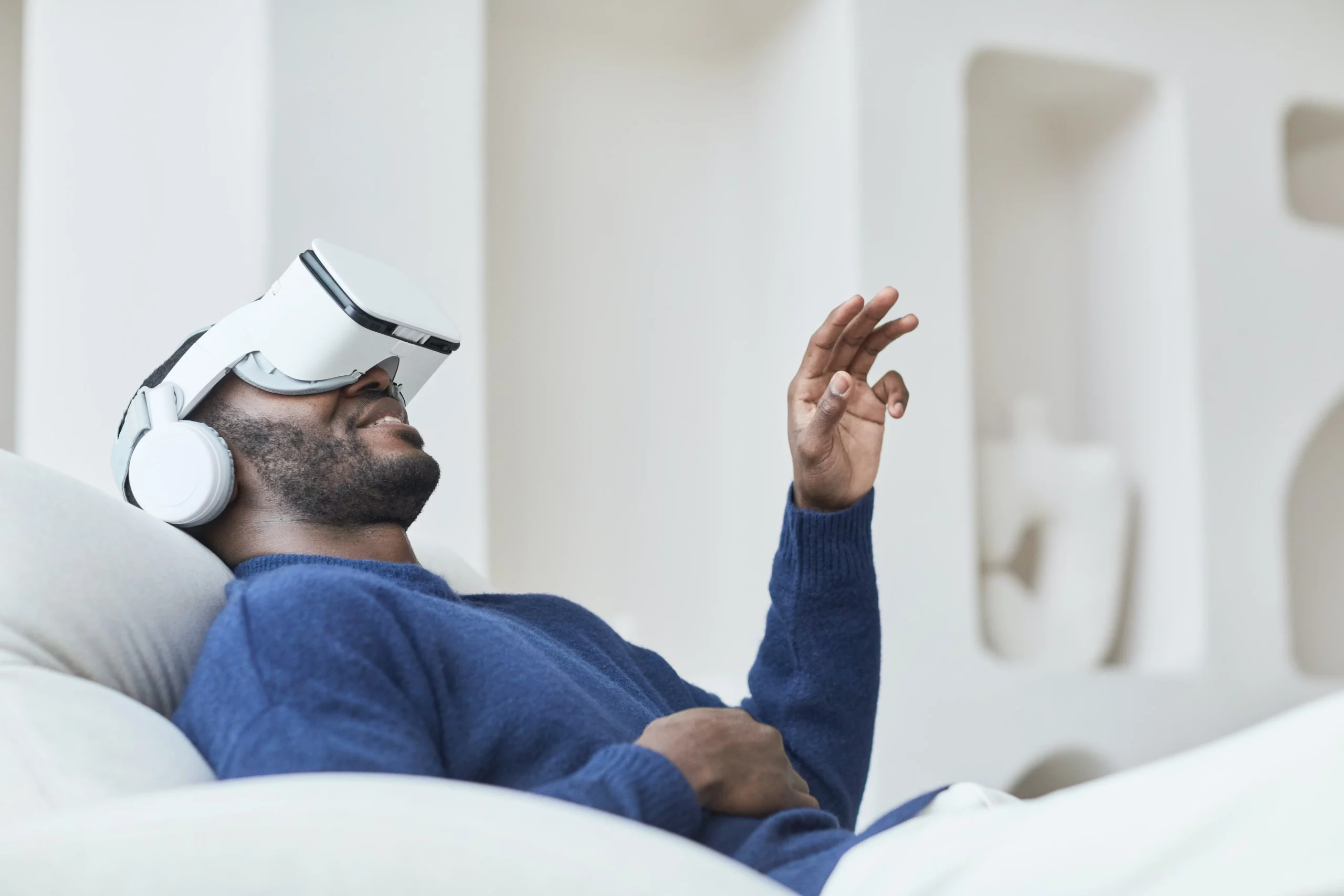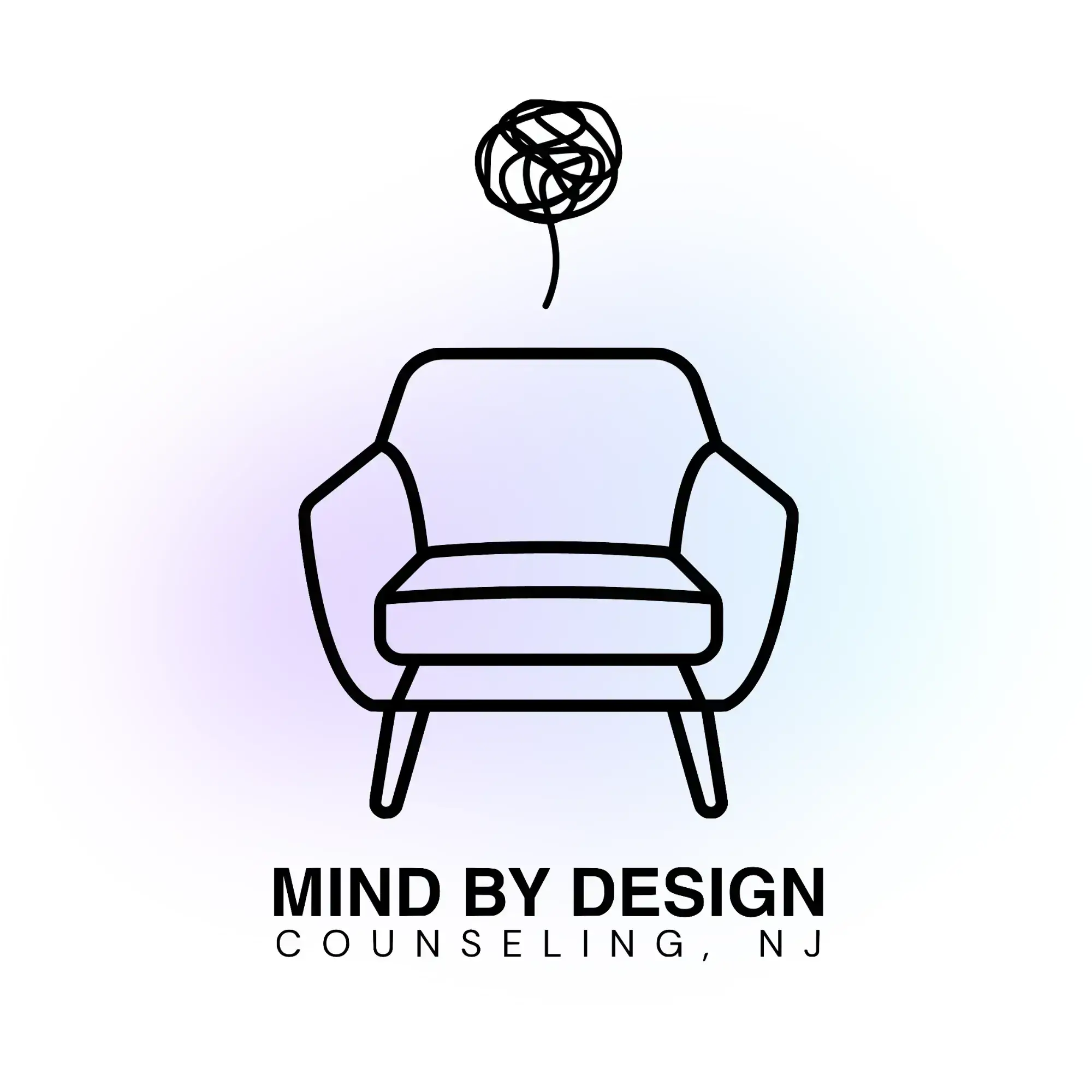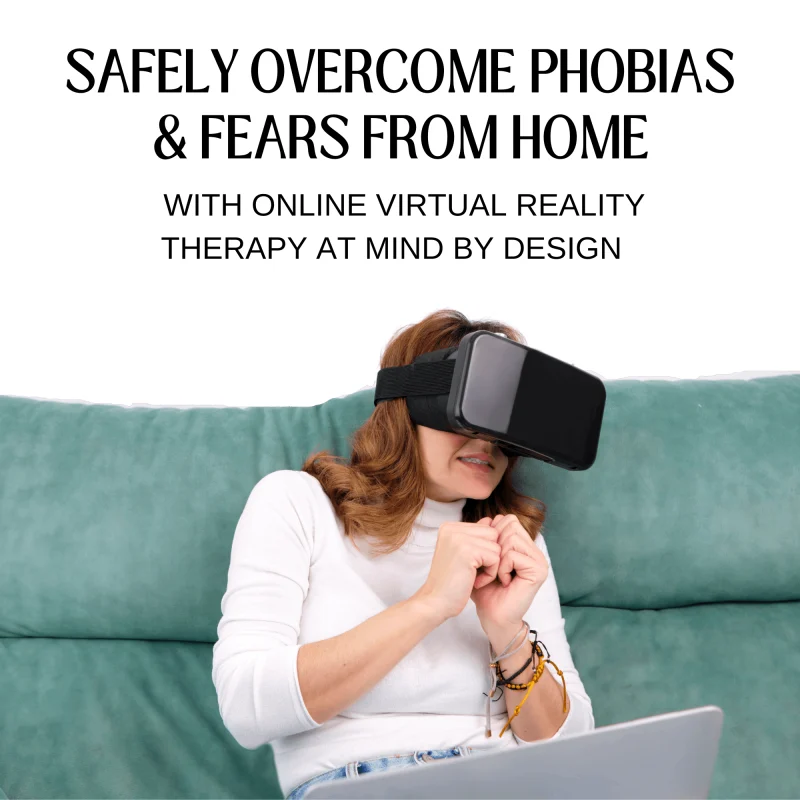VR Therapy : A Promising Future for Mental Wellness

Virtual Reality Therapy (VRT) is an emerging treatment for various mental health issues. It has been shown to reduce anxiety and improve mood in patients with anxiety, depression, PTSD, addiction, chronic pain, eating disorders, & phobias. It provides a safe, controlled environment where clients can work to overcome their fears, address trauma and learn new, helpful skills in a virtual setting.
Though it’s not yet widely available Mind By Design offers VRT that you can use right from your home. This immersive technology allows patients to feel comfortable and in control while working through challenging mental health symptoms
How Does VR Therapy (VRT) Work?
The use of VR in therapy has been going on for nearly 30 years and recently became more available to therapists and clients. Clients are immersed in a 3D virtual environment that recreates an experience they have identified as stressful or fear-inducing situation. While working with their therapist, the clients learn skills that help to identify and reduce anxiety triggers, such as “thought traps” and “mental compulsions” that can fuel anxiety. Together, the therapist and client implement new techniques that lessen the mental and emotional response to the stress stimulus.
This type of treatment is also known as Exposure Therapy and it is used to reduce fear or anxiety through controlled exposure techniques while simultaneously learning new skills that help regulate physiological, cognitive and emotional responses. Prior to VRT, exposure therapy required in-vivo exposure, therefore, many therapists and clients found it very difficult to use in therapy.
The Benefits of Using VRT
Virtual reality presents a range of advantages as a therapeutic tool that offers an authentic and tailored experience. In recent years, VRT has become more readily available to providers, and is even being accepted as a medical support by some insurance companies! Here are some of the benefits of using virtual reality in mental health:
Welcoming, non-intimidating
By recognizing that a virtual environment is not real, individuals may find it easier to approach a difficult virtual situation than a real one. Furthermore, research shows that individuals respond similarly to VR environments as they do in in-person situations, therefore the skills gained in VR Therapy are applicable life skills.
Personalized Treatment for each client
Virtual reality therapy can be personalized to meet individual needs and improve accessibility. Virtual reality programs recreate realistic situations that we face in daily life, as well as unique scenarios that may be more challenging. For example, exposure therapy for driving-related fears can be effective through virtual reality, as real-life driving may be too complex or dangerous to replicate. Similarly, individuals can enjoy various immersive nature experiences that are unlikely to occur in real life due to practical barriers such as travel and expenses. A personalized VR experience allows for all people to receive care that meets their unique mental health needs.
Accessible and Convenient
Virtual reality in mental health can benefit older adults transitioning into long-term care facilities, a population that is vulnerable to mental and physical health challenges. Elderly individuals also face behavioral limitations, making some forms of therapy impractical. Since moving to long-term care can be distressing and disorienting, immersive virtual experiences in familiar environments may provide comfort.
Accessibility is a key advantage of virtual reality therapy for the general population also. It allows individuals to access therapy from the comfort of their own home through tele-therapy supported by VR. This is particularly beneficial for those with mobility issues or for individuals who live in remote areas, have limiting schedules or who can’t travel to their therapists office
VR Therapy in mental health is more accessible to the general public than ever before . Furthermore, research shows that successful completion of therapy is more common when VRT is used in conjunction with more traditional therapies.
How do I get started as a new client?
New Clients can reach out to us directly via call, text or email here:
What is your cancellation policy?
We ask that clients provide at least 24 hours notice in the event that they need to cancel to avoid the 50% cancellation fee. we understand that life happens and do our best to be flexible & reschedule.
Does my insurance cover my visits?
We provide”Courtesy Billing” for clients who are using the Out-of-network insurance benefits.
Our Insurance Page shares a small blurb about Why We Left Insurance Panels
Do you offer traditional talk therapy?
of course! though we have some unconventional therapy approaches, we are rooted in evidenced based practices. Talk therapy is a major player in the therapy room! See What we Treat and Integrative Services for more information
Is Online Therapy As Effective As In-Person Therapy?
Online therapy is essentially face-to-face counseling, just conducted remotely. Studies show that teletherapy is as effective as traditional counseling. Professional organizations and state governments recognize its benefits and have set regulations for it. However, like any therapy, its success in achieving your goals isn’t guaranteed. It’s important to discuss with your therapist whether teletherapy is working for you.
Can I Change Therapists If I'm Not Happy?
Yes, you can switch therapists to another provider within the practice, or we can provide you a referral if preferred. We want to ensure that your time and effort are well spent, and that you are getting the relief you need, that’s why we work collaboratively with each other in the practice, as well as outside therapists who we know and trust.
How Do I Know If Therapy Is Helping?
You should feel like you’re making progress. Signs it’s working include:
Feeling comfortable talking to your therapist
Your therapist respects boundaries
You’re moving towards your goals
You feel listened to
You’re doing better in life
Your self-esteem is getting better
Is Online Therapy Easy to Use for Non-Tech-Savvy People?
Yes, it’s pretty simple to access sessions. You’ll need basic internet skills, such as opening and visiting the patient link sent to you via email. It’s similar to video chatting like Facetime or Zoom. We can also walk you through it on the phone the first time to ensure a strong connection
What Questions Should I Ask My New Therapist?
Feel free to ask anything. Some good questions are:
- How often will we meet?
- What do you specialize in?
- What experience do you have with my issue?
- What outcomes can I expect?
- How will I know I’m progressing?
- How long do you usually work with clients?
- How will we set my treatment goals?
How Should I Prepare for My First Session?
Showing up is all that you need to do! But if you really want to get the most out of session, it could help to take some time to think about what you want from therapy. It helps to write down your goals, questions you have or things that you feel are important to share.
What is the difference between associate therapists & fully licensed therapists?
Our Qualifications:
Our founder, Rebecca Sidoti, is a highly qualified, state-licensed therapist and supervisor with extensive training in anxiety related disorders and innovative treatment such as Ketamine Therapy. Mind by Design Counseling adheres to standards set by the our governing counseling boards.
To see each providers credentials, training and licenses, visit our “Meet the Therapists” Page to learn more.
- LAC/LSW are therapists who may practice clinical work under the supervision of a fully licensed therapist.
- LPC/LCSW are therapists who have completed the necessary clinical hours post-graduation under supervision and can practice clinical work independently.
What Geographic Areas Are Served?
Currently, we serve clients in New Jersey and are expanding to other states as telehealth laws evolve. While telehealth offers the convenience of attending sessions from anywhere, state laws require clients to be in-state during their session.
Is Virtual Counseling Suitable for Everyone?
Online therapy might not be as effective for individuals with chronic suicidal thoughts, severe trauma, significant mental health history, or those recently in intensive care. Such cases often benefit more from traditional, in-person counseling. We’ll help you decide if our online services are right for you during your intake and evaluation.
What Equipment is Needed for Online Therapy?
To join a session, log in using the credentials we provide. No downloads are needed. Our platform, compatible with both individual and group sessions, requires:
A computer or mobile device with a webcam and internet access.
We’ll help you test your setup before your first appointment to ensure a reliable connection. iOS users should use the Safari browser for mobile and tablet sessions.
What Questions Will Therapists Ask Me?
It depends on your goals. Expect questions about your thoughts, feelings, relationships, work, school, and health. They’ll ask to understand your therapy goals.
How Do You Keep Client Information Secure?
Security and Confidentiality of Sessions:
Your privacy is crucial to us. We use TherapyNotes, a HIPAA-compliant platform, ensuring secure and confidential teletherapy sessions. This platform’s security features include encrypted video connections, secure data transfers, and encrypted databases, ensuring your information is safe at all times.
What is VRT used for?
we use VRT to support Exposure Therapy, a long standing traditional therapy modality to treat phobias, anxiety and stress. we send a headset directly to your home so you can access VRT from anywhere.
VRT not only helps with exposure therapy for phobias, but is great for ADHD, mindfulness, PTSD and social anxiety.

